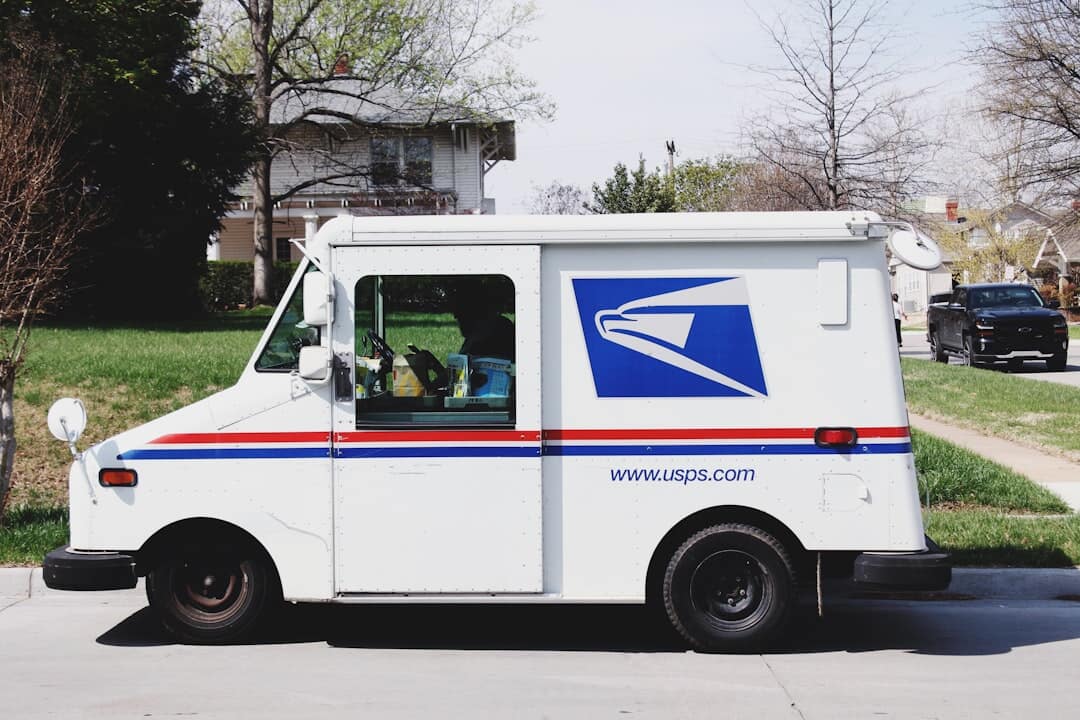Remember getting actual mail? Not bills or junk, but something that felt like it was just for you? In our very digital world, receiving physical mail creates a memorable experience. This is where smart marketing automation, specifically using direct mail automation, makes a difference for startups and growing businesses.
You might think direct mail is outdated. Well, partly true. Traditional direct mail efforts, like mass mailings, are often inefficient and lack targeting.
But modern direct mail automation is entirely different, merging the tangible impact of physical mail with the intelligence of digital marketing automation. It allows you to send mail direct to the right people, at the right time, with a personalized message they can hold. Let’s look at how this powerful approach can significantly benefit your business’s marketing strategy.
Table of Contents:
- What Exactly is Direct Mail Automation?
- Why Bother with Direct Mail Automation?
- How Does Direct Mail Automation Actually Work?
- Key Features to Look For in Direct Mail Automation Software
- Putting Direct Mail Automation into Action: Use Cases
- Avoiding Common Pitfalls
- Conclusion
What Exactly is Direct Mail Automation?
So, what does direct mail automation involve? It uses technology to automatically send personalized physical mail based on specific triggers or customer actions. Imagine email marketing automation, but for sending postcards, letters, or even small packages through the postal service as part of your mail marketing plan.
Instead of printing thousands of generic flyers for a broad direct mail campaign, you integrate specialized direct mail automation software with your existing tech stack. This connection lets you send mail automatically when someone reaches a milestone, abandons a cart, or matches a specific profile in your CRM. It’s highly targeted, timely, and feels much more like personal direct mail.
This approach uses data effectively to create meaningful physical touchpoints that complement your digital marketing efforts. This automated direct mail marketing is far more effective than older methods. It’s about using an automation platform smartly.
Why Bother with Direct Mail Automation?
You already use email, social media, and paid ads. Why add physical mail back into your marketing mix? Because direct mail works, especially when implemented intelligently through automation. The benefits are substantial for busy founders and marketing teams looking to improve marketing results.
Saves You Time and Effort (Big Time)
Manually sending personal direct mail to hundreds or thousands of contacts is incredibly time-consuming for lean teams. Designing, printing, stuffing envelopes, addressing, and mailing takes significant effort away from strategy. Mail automation handles nearly all these steps.
Once you set up your triggers within the automation tool and create templates for your mail piece, the system operates independently. A new customer signs up? A welcome postcard is automatically sent. A high-value lead meets certain criteria? A personalized offer arrives via print mail.
This frees up your team from the manual process, allowing them to focus on campaign strategy and performance analysis instead of administrative tasks. Automating direct mailings transforms efficiency.
Hyper-Personalization That Works
Automation allows for a level of personalization that’s difficult to achieve manually when dealing with large volumes. You can pull data directly from your CRM—names, purchase history, engagement levels, locations, company details—and dynamically insert it into your direct mail pieces. This personalization goes far beyond simply using a first name.
Imagine sending a postcard featuring a product a customer viewed but didn’t purchase, or a thank you note mentioning specific feedback they provided. According to research from Epsilon, personalized mail significantly boosts response rates. This detailed approach makes the recipient feel recognized and valued, effectively cutting through digital noise.
Advanced personalization tools within some automation platforms can even customize images or offers based on recipient data. These highly targeted campaigns resonate more strongly. The goal is relevant, personal direct mail.
Reaching People Where They Are (Not Just Online)
We all experience overflowing digital inboxes and endless social media feeds. Capturing attention online is increasingly challenging. Physical mail provides an alternative channel, one that people interact with differently.
People often sort their physical mail immediately, offering a brief window of focused attention. Studies consistently show high engagement rates for direct mail compared to email, with open rates sometimes exceeding 90% for mail pieces that look important or personal. Direct mail automation helps you leverage this less cluttered channel effectively.
Integrating direct mail gives you another touchpoint, reinforcing your brand message and reaching audiences who might be less responsive to digital-only campaigns. It diversifies your marketing communication strategy.
Better Tracking and Measurable Results
A major drawback of traditional direct mail was the difficulty in tracking return on investment (ROI). How could you definitively know if that postcard led to a specific sale? Direct mail automation software solves this challenge.
Many automation tools offer features allowing analytics track performance. These include unique promotion codes, QR codes linked to specific landing pages, or integration with your web analytics software. You can see who received which mail piece, when it was likely delivered, and whether they took the desired action (like visiting a URL or using a code).
This capability makes it much easier to measure the impact of your direct mail campaigns and justify the investment. You can monitor performance metrics directly within the mail automation platform or your CRM. This allows for data-driven optimization of future mail campaigns.
Scalability for Growing Startups
As your startup expands, your marketing requirements evolve. A manual process feasible for 100 customers becomes unmanageable at 10,000. Direct mail automation is designed to scale alongside your business growth.
Because the automation tool connects to your systems and runs automatically, it can handle increasing mail volumes without needing a proportionally larger team. Whether you need to send 50 mail pieces a week or 5,000, the fundamental process remains consistent. This makes automated direct mail a sustainable strategy for long-term growth.
The ability to manage larger, more frequent mail campaigns automated through the software ensures your physical mail outreach keeps pace with your customer base expansion. This scalability is crucial for ambitious companies.
How Does Direct Mail Automation Actually Work?
It might seem complicated, but the process follows a logical sequence. It involves connecting your customer data to automated triggers that initiate the sending of physical mail. Here’s a typical workflow using mail automation tools:
Connecting Your Data (The Smart Part)
First, you need to link the mail automation platform to where your customer data resides. This is usually your Customer Relationship Management (CRM) system (like Salesforce, HubSpot) or perhaps your e-commerce platform (like Shopify) or other parts of your existing tech stack.
This integration allows the direct mail automation software to access customer actions, profiles, and data fields in real-time or near real-time. Often, a direct mail API or pre-built connectors make this connection process relatively simple. However, depending on your specific systems, some technical assistance might be needed to ensure everything functions properly.
Ensuring data flows smoothly between systems is fundamental for the automation to work effectively. Without accurate data synchronization, triggered mailings might fail or contain errors.
Setting Up Triggers and Workflows
Next, you define the rules that govern when mail is sent. These triggers instruct the sending platform when to initiate a direct mail piece based on specific events or customer attributes. You build workflows within the automation tool to manage these rules.
Examples of common triggers include:
- If a customer makes their second purchase, then send letters or a ‘Thank You’ card.
- If a high-potential lead visits the pricing page twice but doesn’t convert, then send a case study mailer.
- If a subscription is nearing renewal, then send a personalized reminder letter via print mail.
- If a customer in the financial services sector requests information about mortgages, send a relevant informational packet.
- If a real estate lead inquiries about properties in a specific zip code, send a postcard featuring local listings.
These workflows can range from simple one-step actions to complex sequences involving time delays, conditional logic (if/then branching), and coordination with other marketing channels like email marketing. The goal is to make the timing and content highly relevant to the recipient’s context.
Designing and Printing On-Demand
You’ll need designs for your mail pieces, such as postcards, letters, or folded self-mailers. Most direct mail automation platforms offer template builders or allow you to upload custom designs created by your team. A key aspect is designing these templates with variable data fields (e.g., {{FirstName}}, {{CompanyName}}, {{LastPurchaseItem}}) that automatically pull information from your connected data source, like your CRM.
When a trigger condition is met, the system automatically generates the personalized artwork for that specific recipient using the template and their data. It then securely transmits the print-ready file to a network of print partners. These partners produce the individual mail piece on demand, eliminating the need for large, speculative print runs common in traditional direct mail.
This on-demand printing ensures cost-effectiveness, especially for highly targeted campaigns where you might only send a few pieces at a time for certain triggers. It also allows for greater flexibility in testing different designs and messages for various direct mail campaigns.
Mailing and Tracking
The final step is the physical mailing process. The mail automation platform coordinates this through its integrated print and mail partners. They handle critical tasks like address verification to improve deliverability, applying correct postage, and inducting the mail pieces into the postal system (e.g., USPS in the US).
Many platforms also manage the tracking component. They log when a specific mail piece was sent and often provide delivery status updates where available. Critically, they integrate tracking data, such as the usage of unique URLs or promo codes printed on the mail piece, back into your CRM or analytics system.
This closes the loop, enabling you to monitor performance and attribute results directly back to your automated direct mail efforts. This is essential for understanding the effectiveness of your mail campaigns.
Key Features to Look For in Direct Mail Automation Software
Selecting the right direct mail automation software is important for success. Different platforms offer varying capabilities. Here are key features to evaluate when considering an automation tool for your startup or marketing team:
CRM and Marketing Automation Integration
This is perhaps the most crucial feature. Assess how well the mail automation tool connects with the systems you already rely on. Look for native, pre-built integrations with your specific CRM, marketing automation platform, e-commerce system, or other elements of your existing tech stack. Seamless data flow through a robust mail API or direct mail API is vital for effective automation and ensuring systems function properly together.
Template Libraries and Design Tools
Does the platform simplify the creation of professional-looking direct mail pieces? Evaluate the availability and quality of pre-built templates that you can easily customize. If you have an in-house designer, check how straightforward it is to upload and manage custom artwork files within the sending platform.
Good design tools or flexible template options allow you to maintain brand consistency across your physical mail. Look for personalization tools within the design interface as well.
Trigger Options and Workflow Builders
How flexible and powerful is the automation engine itself? Can you set up triggers based on the specific events, data points, and logic that are most relevant to your business objectives? Examine the usability and sophistication of the workflow builder. You need a system that is capable enough for your needs but not excessively complex to manage for your team.
Consider if it supports multi-step sequences, time delays, A/B testing of different mail pieces or offers, and coordination with other marketing actions. Well-designed campaigns automated through workflows yield better results.
Personalization Capabilities (Variable Data)
Investigate the depth of personalization the platform supports. Can it easily insert standard data fields like name, company, and address? More importantly, does it support custom fields pulled from your CRM, snippets of purchase history, loyalty status, or even dynamically personalized images or content based on user behavior or profile data?
Robust personalization tools are essential for creating relevant and engaging direct mail that feels like personal direct mail, not mass advertising. This significantly impacts response rates.
Analytics and Reporting
How will you measure the success of your direct mail campaigns? The chosen automation platform should provide clear reporting dashboards. These reports should detail what mail pieces are being sent, recipient lists, delivery status information (when available), and methods to track conversions, such as through QR code scans or unique landing page visits driven by the mail.
Integration that feeds performance data back into your primary analytics tools (like Google Analytics) or CRM is a significant advantage. This allows you to monitor performance comprehensively and calculate ROI effectively. Strong analytics track the value generated.
Print Quality and Mailing Options
Do not overlook the quality of the final physical product. What options does the platform offer for paper stock, print finishes (e.g., matte, gloss), and available formats (postcards of various sizes, letters, folded mailers, dimensional mailers)? Also, inquire about typical production turnaround times and available shipping or postage options (e.g., First Class, Standard Mail).
The physical mail piece represents your brand, so ensuring high print quality and reliable delivery is essential. Reliable print mail output is a core function.
Compliance and Data Handling
How does the platform handle data security and compliance with regulations like GDPR or CCPA? Does it offer features like address verification to clean lists and reduce undeliverable mail? Review their privacy policy and ensure their practices align with privacy laws and your company’s standards.
Proper data handling and compliance features are non-negotiable. Good address verification saves money and improves campaign accuracy.
Here’s a table summarizing key areas to compare:
| Feature Area | What to Look For |
|---|---|
| Integrations | Native connection to your CRM, MAP, E-commerce; robust Mail API / Direct Mail API availability. |
| Design & Templates | Easy-to-use template editor, good template library, custom design upload support. |
| Automation & Workflows | Flexible trigger options, logical workflow builder (if/then, delays), A/B testing. |
| Personalization | Standard field merging, custom field support, dynamic content/images. |
| Analytics & Tracking | Delivery tracking, conversion tracking (QR codes, URLs), reporting dashboard, CRM data sync. |
| Print & Mail | Variety of formats, paper quality options, reliable print partners, address verification service. |
| Compliance & Support | Adherence to privacy laws, clear privacy policy, accessible customer support. |
Putting Direct Mail Automation into Action: Use Cases
The theory sounds promising, but how can you apply direct mail automation practically? Here are several actionable ways startups and established marketing teams use mail automation tools effectively across various industries:
Welcoming New Customers
First impressions are lasting. Automatically send direct mail, like a branded postcard or a small welcome kit, shortly after someone signs up or makes their first purchase. This adds a tangible, appreciative touch beyond just a digital receipt or welcome email, making new customers feel valued.
This works well across many sectors, from SaaS welcoming new trial users to e-commerce sending a thank you after the initial order. It helps build rapport early.
Re-engaging Lapsed Users or Customers
Do you have users who haven’t logged into your platform in 60 days? Or customers who haven’t made a purchase in six months? Configure a trigger in your mail automation platform to send a personalized “We miss you” postcard with a compelling offer or reminder of value.
Physical mail can sometimes recapture attention when emails are consistently ignored. This tactic can reactivate dormant segments of your customer base, boosting retention.
Following Up After Events or Webinars
If you connected with a promising lead at a trade show or hosted a webinar they attended, automate a follow-up direct mail piece. Send mail that summarizes key takeaways, offers a personalized demo, or simply serves as a memorable thank you note. This helps your brand stand out from the standard flood of follow-up emails.
This is particularly effective in B2B contexts where relationship building is key. A relevant piece of print mail can keep the conversation going.
Nurturing High-Value Leads
For B2B startups, financial services firms dealing with high-net-worth clients, or real estate agents managing valuable prospects, nurturing leads is critical. Use direct mail automation to send highly targeted campaigns based on where a lead is in the sales funnel. Send a relevant case study after they download a related whitepaper, or consider a dimensional mailer (like a small box containing a useful item or gift) to capture the attention of C-level prospects.
These thoughtful, automated direct mailings can significantly advance leads through the consideration process. They demonstrate commitment and provide tangible value.
Thanking Loyal Customers or Celebrating Milestones
Show appreciation for your best customers to foster loyalty. Automatically trigger a thank you card, a special discount, or even a small branded gift on their customer anniversary (e.g., one year with your service) or after they reach a certain lifetime value or spending threshold. Celebrating milestones makes customers feel valued.
This strategy builds stronger customer relationships, encourages repeat business, and can generate positive word-of-mouth referrals. Loyal customers are invaluable assets.
Abandoned Cart Recovery
Similar to abandoned cart emails, you can use direct mail automation to target shoppers who added items to their online cart but didn’t complete the purchase. Sending a postcard reminder featuring the abandoned items a few days later can be surprisingly effective. The novelty of a physical reminder can prompt them to return and buy.
This requires integration with your e-commerce platform but offers another channel to recover potentially lost revenue. Test different offers or messaging for these mail pieces.
Avoiding Common Pitfalls
While powerful, direct mail automation requires careful planning and execution. Thoughtless implementation can lead to wasted budget or even damage your brand reputation. Here are common mistakes to avoid:
Data Accuracy is Foundational
The adage “garbage in, garbage out” holds especially true for personalized automation. If your CRM data is inaccurate, outdated, or incomplete, your automated mailings will reflect that. Sending mail pieces to incorrect addresses due to poor address verification or using flawed personalization fields looks unprofessional and wastes resources.
Regularly clean and update your contact data. Implement data validation processes to ensure names, addresses, and other personalization fields function properly and are correct before launching campaigns automated through your system.
Don’t Overdo Personalization
There’s a balance between helpful personalization and appearing intrusive or “creepy”. Using a recipient’s name and perhaps their company is generally well-received. Referencing every single product they briefly viewed online might feel uncomfortable when delivered via physical mail.
Test different levels of personalization to find what resonates best with your specific audience. What works for one segment might not work for another. The goal is relevance, not surveillance.
Budgeting for Success
Automated direct mail involves costs beyond the software subscription. Factor in the per-piece costs, which include printing and postage. Understand the pricing structure of your chosen mail automation platform – some charge per piece, others use tiers or credits.
Budget realistically for your direct mail campaigns. It’s often wise to start with smaller, highly targeted campaigns to demonstrate ROI before scaling up to larger initiatives. Monitor performance closely against your budget.
Integrating, Not Isolating
Direct mail works best as part of an integrated, multi-channel marketing strategy, not in isolation. Consider how your automated direct mail pieces complement your email marketing sequences, sales team outreach, digital advertising, and social media efforts. A coordinated approach reinforces messaging and improves overall effectiveness.
Ensure your direct mail automation platform integrates well with your existing tech stack to facilitate this coordination. The combined impact of multiple touchpoints is usually greater than relying on any single channel alone.
Compliance with Privacy Laws
Ensure your direct mail practices comply with relevant privacy laws like GDPR and CCPA. This includes how you collect, store, and use personal data for mailings. Have a clear privacy policy and honor opt-out requests promptly.
Unlike some digital tracking methods potentially affected by changes like third-party cookie deprecation (often discussed in a cookie policy), direct mail relies on explicitly provided data like names and addresses. However, respecting privacy choices and data security remains paramount.
Conclusion
Direct mail is far from obsolete; it has simply evolved. For startups, real estate professionals, financial services marketers, and others seeking ways to cut through digital noise and build genuine connections, direct mail automation presents a compelling opportunity. It combines the enduring appeal of physical mail with the efficiency and targeting intelligence of modern marketing automation software.
By saving time, enabling deep personalization through sophisticated personalization tools, reaching customers effectively offline, and providing measurable results via analytics track features, this strategy can be a powerful component of your growth toolkit. Integrating direct mail automation into your broader mail marketing strategy allows you to send letters and other mail pieces that get noticed. If you haven’t explored how mail automation could enhance your marketing mix and improve marketing outcomes, now is an excellent time to investigate how these automation tools function properly within your operations.
Getting tangible, relevant messages into your customers’ hands via automated direct mail marketing could be a significant differentiator for your business. The ability to send direct mail that is timely and personal demonstrates that direct mail works effectively when powered by smart automation. Monitor performance, refine your approach, and leverage the unique impact of physical mail.





